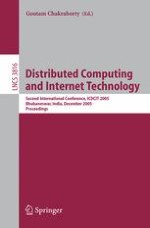The opening ceremony and pre-conference tutorials on various related topics were held on December 21. The technical program started on December 22 and continued for three days. The program was arranged in single track so as to enable participants to attend sessions of di?erent tracks. Papers from the DM, IT, SE, and SS tracks were divided into two sessions, whereas DC track sessions were held on the ?rst two days of the conference. The program also included two plenary talks. The ?rst talk was delivered by S. S. Iyengar from Louisiana State University, USA. The second talk was delivered by He Jifeng from the International Institute for Software Technology (IIST) Macau. Prof. Iyenger’s talk on “The Distributed Sensor Networks — An Emerging Technology” was focused on new ideas about the use of distributed systems for emerging technology, while Prof. Jifeng’s talk on “Linking Theories of Concurrency by Retraction” dealt with semantics of concurrency. All the conference committee members contributed towards the success of ICDCIT 2005. And it was a pleasant experience for me to work with them. The one name that sticks out is R. K. Ghosh, Steering Committee Chair. He really steered the group with his past experience as Program Chair of ICDCIT 2004.
